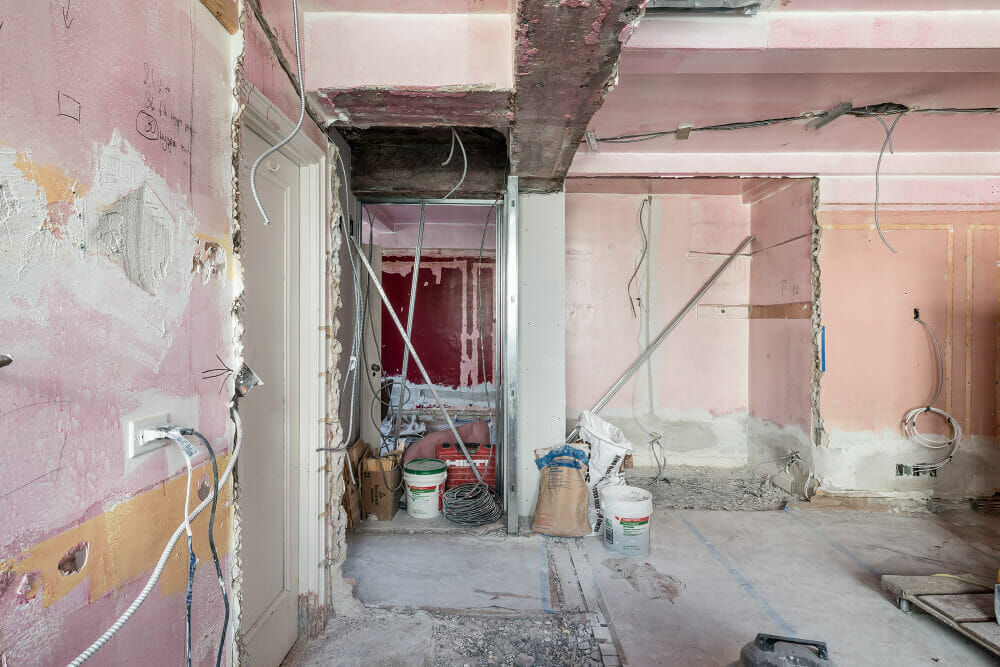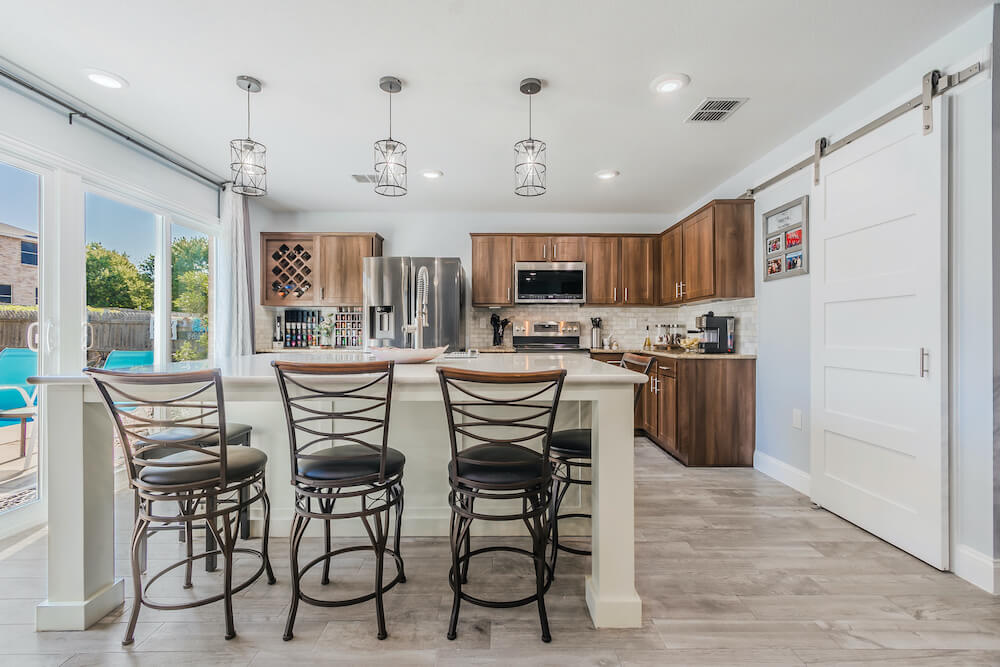Common Renovation Delays & How to Prepare for Them
Home renovations are exciting! They’re a chance to create your dream space and add value to your home. But even the most anticipated renovations can hit a snag. Unexpected delays can derail your timeline and budget, leaving you stressed and frustrated. But fear not! By being aware of common renovation delays and taking steps to prepare for them, you can keep your project on track and avoid costly surprises.
Be proactive with your Sweeten contractor’s guidance
At Sweeten, our goal is to educate homeowners on the many moving parts of renovating. We share the most common renovation delays that can impact project timelines. While each delay may not be able to be avoided, we offer insight for clarity and tips on how to alleviate its negative impact. Smart prep and setting realistic expectations will help get you to the finish line.
Renovation Delays 1: Building Approval and Requirements
Navigating the Approval Maze
Securing building approval is often the first hurdle in any renovation project. This process can be time-consuming, as it’s subject to factors beyond your control. The timeline for approval can vary widely, extending from weeks to months, depending on the building’s specific procedures and workload.
Assembling the Necessary Documents
Most buildings require a comprehensive package of materials to outline the project scope and the qualifications of your renovation team. This documentation can take time to gather and organize. The approval turnaround time may also vary, ranging from a few days to several weeks or even months, especially if the building board follows a monthly review cycle. This can be particularly frustrating during holiday seasons or summer months when meetings may be skipped or postponed.
Adhering to Building Regulations
Once approval is granted, your renovation team must strictly adhere to the building’s rules and regulations. These guidelines, often outlined in an “alteration agreement,” can significantly impact the construction schedule. For example, your building may impose restrictions on daily work hours, prohibit work on holidays, or limit the total duration of the project. Additionally, the agreement may specify stricter lead or asbestos requirements than local regulations, or it may mandate measures to protect common areas, such as hallways, which can increase the crew’s setup and breakdown time.
Alteration Requirement tips
We often hear that a building is really strict. The reality is that buildings have wide leeway to run their operations as they see fit. But the rules must be applied equally to all residents. If an alteration requirement is included in your building’s written agreement, that typically indicates that it has gone through the management structure and is applied uniformly. However, if you are told to follow a rule that is not in the alteration agreement and this is the first you’re hearing about it, you may be able to make the case that the requirement isn’t being uniformly applied and is therefore unfair. People occasionally try to get the building management to reconsider, but most of the time, the building’s requirements are just accepted as part of the cost of doing business. Sweeten brings homeowners an exceptional renovation experience by personally matching trusted general contractors to your project, while offering expert guidance and support—at no cost to you. Renovate expertly with Sweeten
Renovation Delays 2: Lead times and dependencies
Picking materials is an exciting part of any reno project—especially if you’re using unique or unusual items. However, fabrication and shipping can have extensive lead times. It’s not at all unusual to find 12- to 15-week lead times on handmade products, and international suppliers have to contend with unpredictable border crossing.
Even with the best planning, certain renovation steps require that material is installed before finalizing any related elements. For example, a countertop comes with high stakes. The material is a large, heavy piece prepped offsite with no room for error. Generally, you can’t measure countertops (known as “templating”) until you’ve installed cabinet bases. Your project might be off to the races and then it will appear to grind to a halt as you wait for the countertop supplier to measure onsite before prepping and delivering your slab. The wait is worth it, but it can be maddening to feel close to the finish line with nothing happening in between these steps.
Material Tracking Tip
As you pick materials, track product lead times and be prepared to find a back-up if something is not in stock or is months away. Alert your contractor early on if you’re using materials shipping from outside the United States. Starting a project before every single item is delivered is a gamble that everyone takes, but tracking lead times will help you stay realistic.
Renovation Delays 3: Discoveries during construction
Unveiling the Unknown
Until walls are breached and floors are lifted, the true condition of a home remains a mystery. While pre-renovation probes can provide valuable insights, they often involve creating holes in your living space, which may deter many homeowners. While a contractor might be willing to open a wall for inspection before signing a contract, they typically won’t repair it without additional compensation. It’s essential to acknowledge the possibility of unexpected discoveries that can impact the project timeline once construction begins.
Anticipating Site Surprises
To better prepare for potential challenges, discuss worst-case scenarios with your contractor based on the building’s age and history. Inquire about the likelihood of encountering major plumbing, electrical, sub-floor, or structural issues. Understand how these discoveries could affect your budget and timeline. To mitigate the financial impact of unexpected surprises, consider setting aside a contingency fund. While your contractor cannot predict every possible issue, they should be prepared to collaborate with you to find solutions when challenges arise.
Renovation Delays 4: Permits + Inspections
It should be no surprise to hear that permits affect a project schedule. But one aspect of inspection logistics can be perplexing.
Your local municipality controls permits and inspection approvals. What might be new for a first-time renovator is that there can be multiple inspections needed for a single aspect of a project. Frequently, these inspections are scheduled right as key work is happening. Progress often looks unpredictable or disorganized because work can’t move forward in a linear way. For example, a bathroom remodel that moves plumbing lines has to wait for an inspection before closing up the walls. Also, it might even pause again for a final inspection to close out the permit. Because of this, there can be gaps where a crew can’t continue work and isn’t onsite while the City schedules and conducts its visits.
Permit & Inspections Tip
Talk to your contractor about permit and inspection steps to get a feel for the variables. What may feel like a surprise delay could be a planned process step that is just out of your hands.
At Sweeten, we’re experts at all things general contractors — we pre-screen them for our network, carefully select the best ones for your remodeling project, and work closely with hundreds of general contractors every day. So, we’ve tapped our internal expertise to bring you this guide.
Renovation Delays 5: Site downtime
Downtime on the construction site may not actually be a sign of a delay. However, when you’re living without a functional kitchen or bathroom, days without work happening can feel like torture.
The reality is that project progress doesn’t operate from 9am to 5pm, five days a week. Your contractor should generally schedule the crew to maximize progress. They will also need to balance logistics including the availability of materials, building rules, or logical work sequencing. Some materials need time to cure or set. Also, individual crew member health and family issues as well as commitments on other projects are taken into consideration. These are all moving pieces.
Also, as a job progresses, the required skill level increases. The worker who completes demolition may not have the specialized skills of the person installing your glass mosaic tile. Specialized trades are in higher demand, so when more highly skilled subs are needed, it can result in schedule gaps.
Coverage tip
Larger, more established teams may manage coverage more seamlessly, while smaller teams may have to get creative to run their businesses. As a result, you may see associated costs or savings with these different levels of service. If you feel frustrated about the schedule, tune into specifics. Are there unexplained gaps in work? Are you uncertain about the overall timeline or a move-in date that might require alternate planning? Communicate with your team about specific areas where crew availability or progress is a concern for you.
Ready To Get Started?
Post your project on Sweeten for free and make your dream home a reality. Sweeten puts you in control of your renovation, from finding the perfect contractor and gathering design inspiration, to using cost guides to plan your budget wisely.











